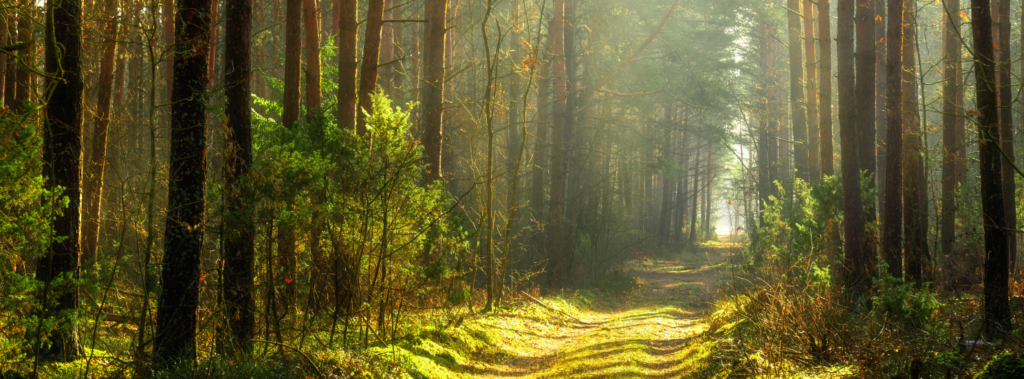Forest therapy, sometimes referred to as “Forest Bathing”, is inspired by the Japanese practice of shinrin-yoku.
Created in the 1980s in response to a spike in stress-related illnesses across Japan, the country’s leaders identified a link between industrial work and working in technology with the looming national health crisis. As a result trails were created to guide people in outdoor therapy and shinrin-yoku was born.
Similar to shinrin-yoku, forest therapy is a guided outdoor healing practice in which trained guides take you through a series of sensory invitations that facilitate you to connect with yourself and nature in the present moment. A powerful way to relax and destress, decades of research have shown that it has far-reaching benefits for health and wellbeing.
“It gives you the opportunity to let your brain slow down”, says Zahra, our resident Forest Therapy Guide. Forest therapy guides set a deliberately slow pace to invite you to experience the wonder of nature through the senses, encouraging presence and connecting with the sensation of being alive within the natural world. This has a cascade effect on your nervous system, helping the brain slow down to meet the world around you, igniting a sense of awe and curiousity that give way to deep relaxation. “Forest therapy is a bit of a misnomer”, she says, “I am just a guide, the Forest is the therapist”.
What happens during a forest therapy session?
Forest therapy can be done in groups, as couples or as a one-on-one experience.
A forest therapy walk takes 2-3 hours on an easy trail in a green space, such as parks or woodlands. We run our walks in a privately owned regenerative woodland on the cusp of the Worcestershire and Warwickshire border. These walks are up to one mile, during which you are given a series of guided invitations and solo work with an opportunity for group sharing over tea time at the end of the practice. “Initially it can feel unfamiliar or a bit ‘woo’. But it’s no different from being in the outdoors as children, the difference is that as adults we have to find the time for it”, says Zahra.
Unplugging is a hot topic. In part because, in the age of infinite screentime, we have forgotten how to. We respond to our racing minds by doing more, our to-do lists seem to grow and grow, and the time we used to take to unplug is now spent scrolling our phones, watching tv or doing both at the same time.
In forest therapy the goal is not to get somewhere, we aren’t looking for a dopamine hit like we do when we use our phones. Instead the goal is to enter a state of being. We seek to reconnect ourselves with the more-than-human world, which refers to all of life around us. We don’t walk very far but instead engage in a meditative practice with nature.
Is it like a walk in nature?
Yes and no. The overlap is the fact that you are outdoors, otherwise the two experiences are different. In forest therapy we make use of invitations to connect with what is termed as the ‘more-than-human-world’. Or, more simply, the world.
“Modern technology can lead to feelings of isolation and feelings of a kind of solipsism“, Zahra says as we walk under a canopy of early Autumn leaves, with dappled light streaming through and the sound of birds chirping in the background. “In forest therapy we aim to reconnect and be reminded that we are all part of something bigger”.
Our Forest Therapy guide, Zahra, is an ANFT certified Forest Therapist, has trained in Shinrin Yoku, Outdoor First Aid and previously trained as a Qi Gong Practitioner.
As part of our commitment to providing you with the tools to thrive, we work to ensure that the repertoire of our offerings is diverse and evidence-based .

